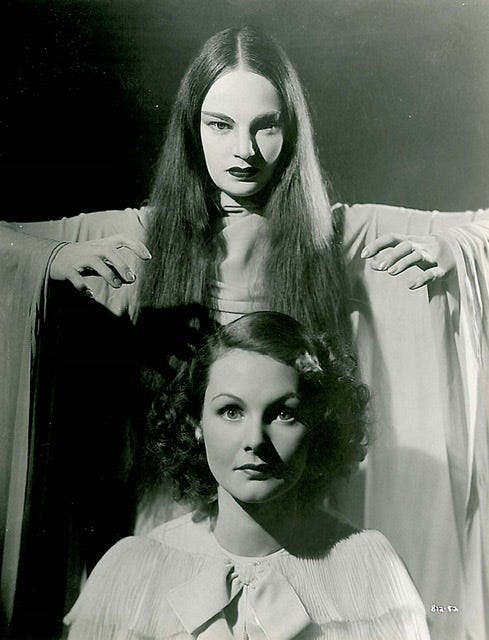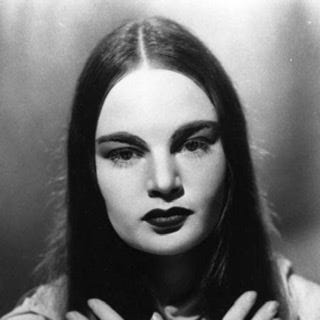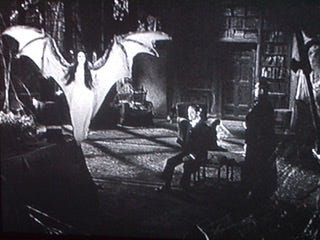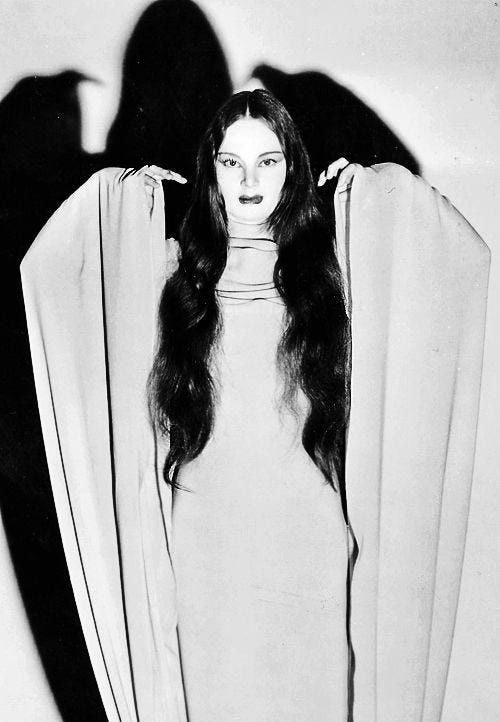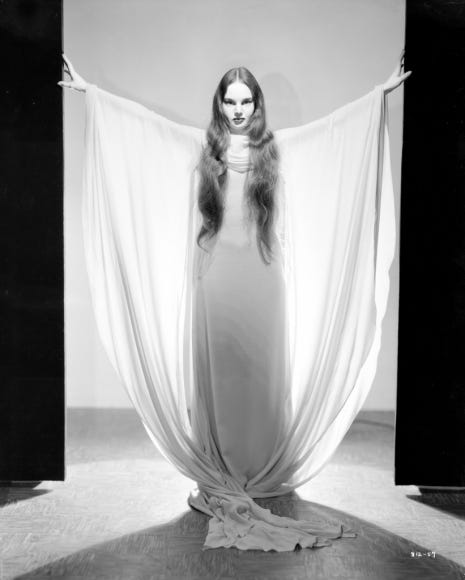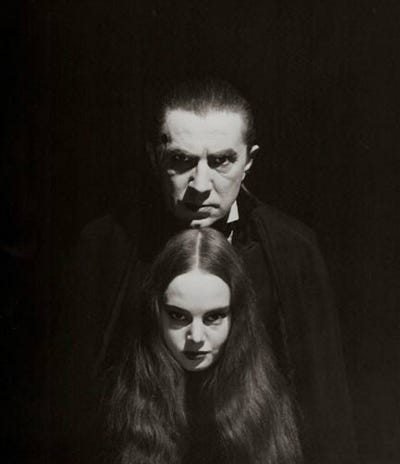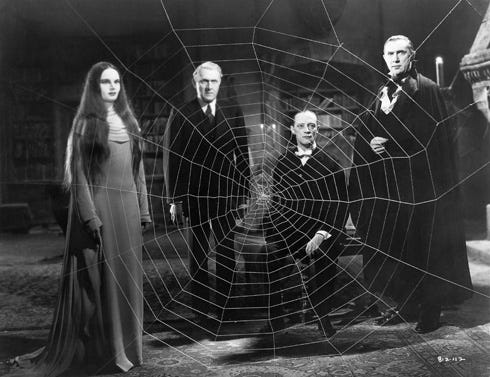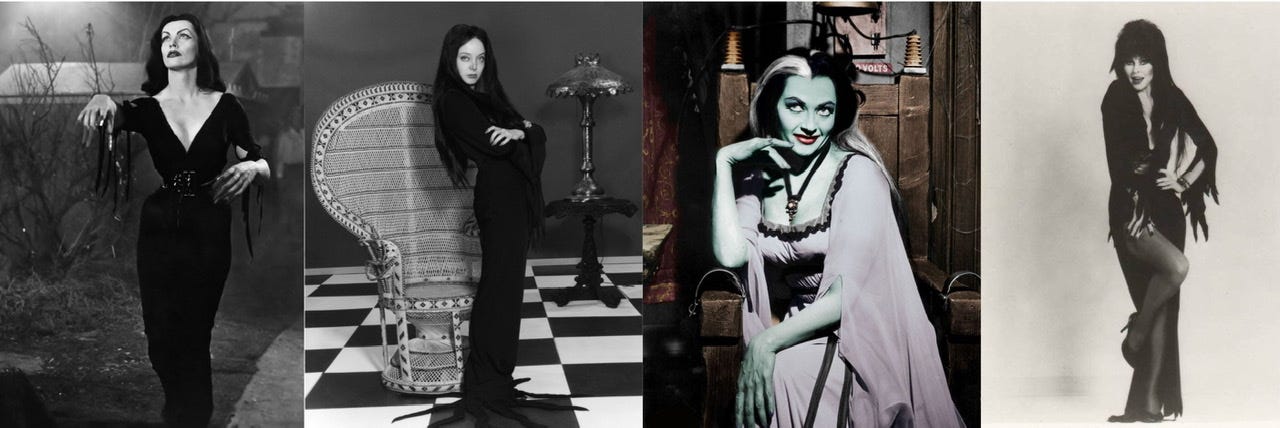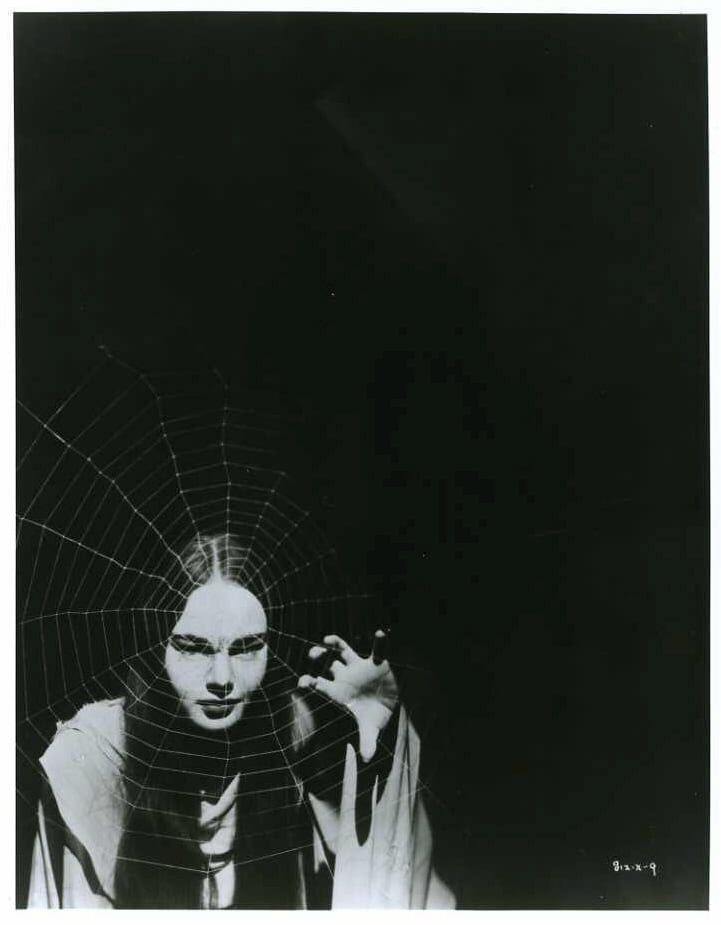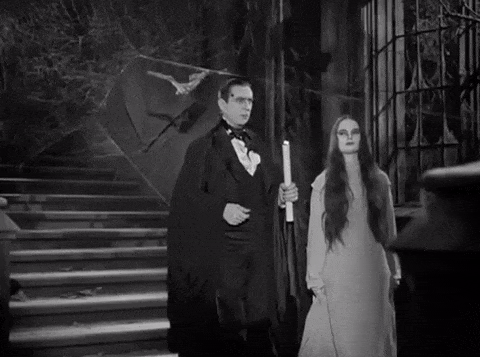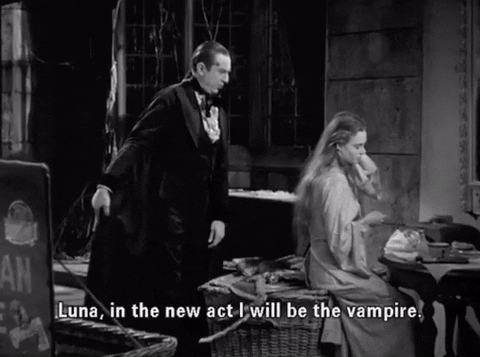“The woman who first gives life, light, and form to our shadowy conceptions of beauty, fills a void in our spiritual nature that has remained unknown to us till she appeared.” The Woman in White, Wilkie Collins (1859)
She glides, silent and smooth as death, along dusty castle steps, lit by candles reflecting in a labyrinth of cobwebs. Plump spiders, jerky bats and a Virginia opossum bow and step aside to her majesty, the teen queen of the vampires.
Carroll Borland was probably 20 when she shot the film for which she would be forgotten, the high point of her career.
Born in San Francisco in 1904, Borland was a drama student at the University of California, Berkeley, when she was discovered by Bela Lugosi. Carroll (two r’s and l’s in real life, sometimes shortened to Carol) had two uncredited screen appearances, a short Wild Babies (1932) and a Laurel and Hardy comedy Me and My Pal (1933). She appeared on Lugosi radar with a fan letter in which she told the actor that she believed Dracula did not die at the end of the film, he merely transitioned into dust in the sunlight. That letter got her a meeting, that meeting got her a role as a victim in one of Lugosi’s stage recreations.
Béla Ferenc Dezsō Blaskó in Lugos, Hungary, in 1882, the best Vlad ever was the veteran of an impressive stage career that included hundreds of roles including Hamlet and Macbeth in Hungarian. Following intrigue surrounding his forays into union organizing, he sailed for New Orleans just after World War I. From there he landed the part of Dracula on the New York stage, which led to his movie career. At 50, he became an overnight, all-night sensation.
Dracula (1931), directed by Tod Browning, was dubbed by one critic as “The First Diabolist of the Cinema.” Browning was on a career path of directing over 60 features including London After Midnight (1927), West of Zanzibar (1928), and Freaks (1932).
For The Mark of the Vampire (1935) Browning was looking for a beautiful but creepy daughter for his vampire, Count Mora, unnaturally played by Lugosi. Bela told him about Borland, a screen test was set, and she nailed it.
The film itself comes packed with quirks and confusion alongside the wolfbane. A murder seems to be caused by a vampire bite. Inspector Neumann (Lionel Atwill) isn’t sure about those two neck pokes, but occult Professor Zelin (Lionel Barrymore), knows a blood sucker when he sees one. Prime suspects are Count Mora (Lugosi) and his spooky daughter Luna.
Luna isn’t in the film that much, but when she is, any suggestion of frivolity flies out the window. She is wild-eyed and hungry, not voracious, just ready. She never speaks, and almost never leaves her trance, even when she flies in as a giant white bat.
Draped at M-G-M in a deco shroud by the designer Adrian (who four years later would costume the land of Oz), Borland is unwrinkled and blanched, even though she’s been day sleeping in a nearby crypt for four centuries. Mute throughout, she moves like a dream memory, never breaking the sleep walking of the dead except once when she is interrupted just inches from sinking her fangs into the neck of Irena Borotyn (Elizabeth Allan). In an instant she starts in surprise, stands hostile, and hisses violently at her intruder.
Borland’s look is so out of place for the mid-1930s. She takes on a timeless persona that will be imitated often as vampire movies increase in popularity. Long hair for women was out of fashion in that midpoint of the Depression, but the actress silenced critics who suggested the she wore “the wiggiest of the wigs.” Her fabulous mane was all hers.
During filming, Lugosi and Borland often carpooled. She recalled that after a particularly hard day’s night of shooting, she and her father figure were too tired to remove their makeup, so they changed their clothes and took Lugosi’s car home. At a stop, a truck driver in the next lane looked their way in fear, then floored his gas pedal as soon as the light changed.
Among the oddities in The Mark of the Vampire is a bullet hole bleeding down his temple that just goes unexplained. Hollywood rumor suggests an incestuous storyline, and that Count Mora was a suicide. Exactly how he and his daughter joined the undead goes also unexplained, which may explain the short running time of 60 minutes. Twenty minutes were trimmed before the film’s release on Apr 26, 1935, possibly to appease studio heads or censors who weren’t quite ready for such a vampiric taboo.
Borland’s movie career faded into the mist. She appeared as a lady of the court to Ming the Merciless in Flash Gordon (1936), then took nearly a 50-year break until her personal appearances on the horror convention circuit led to her roles in Scalps (1983) and Biohazard (1985). She died for real Feb 3, 1994, a month before her first novel Countess Dracula was published.
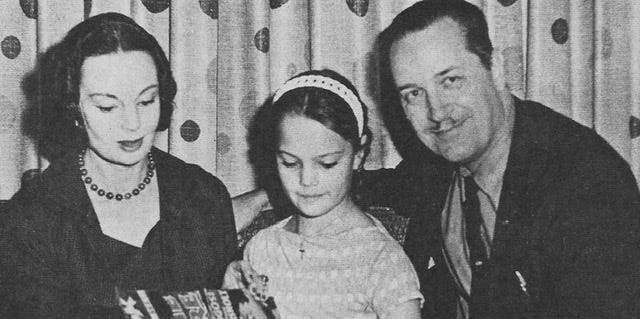
Her image was borrowed freely by Los Angeles TV personality Maila Nurmi aka “Vampira,” as well as Carolyn Jones as Morticia in The Addams Family, Yvonne DeCarlo’s Lilly Munster and Cassandra Peterson’s “Elvira, Mistress of the Dark.” As for the way she portrayed her dearly departed character, Carroll Borland’s Luna Mora set an unholy standard.




